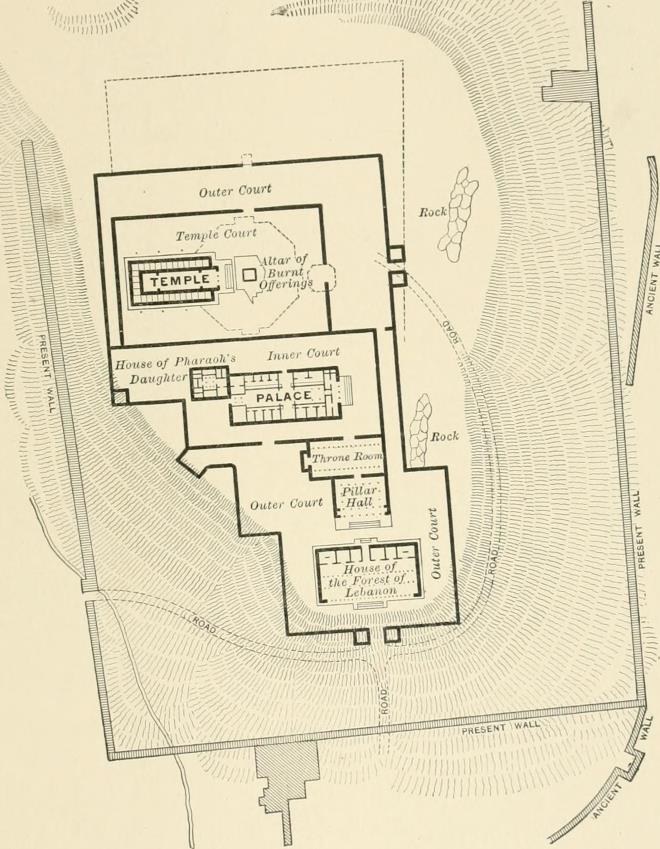The cedar of Lebanon was well-regarded and certainly well-respected in ancient times, and was therefore used for the most prestigious of developments that would have been fit for royalty. Therefore, when looking at the accounts regarding the construction of the Temple of Solomon (used to worship Yahweh and to hold the Ark of the Covenant, amongst other things) and some surrounding buildings, during a period in between the decline in the power of the Egyptian Empire and the rise of another, it is not at all surprising that the timber of this tree featured so readily.
The temple, it is suspected, was erected, near to Jerusalem, during the tenth century before Jesus’s birth (999-900 BCE), under decree of Solomon, who was, after his father David, the king of the kingdoms of Israel and Judah. The period in which father and son reigned was a politically stable one that lacked any marked superpower, and thus the construction of the temple was feasible. Originally, the idea had been his father’s, though as David had been unable to built the temple in his era, Solomon was responsible for overseeing the project.
Probably not surprisingly, the temple and outbuildings were to be made generally from stone, as stone is incredibly durable. However, the roof and the cladding works (in the interior and exterior), as well as the doors and columns, and other furniture, needed to be made from wood. Geographically, the area in which Solomon reigned was in possession of a bountiful supply of timber, largely cypress and pine, though the wood of these two species lacked the importance fit for a true king. Therefore, Solomon sought to source the wood of a more fitting tree species, and the cedar of Lebanon ticked all of the necessary boxes. The only problem was that the area didn’t have any cedars of Lebanon, and therefore Solomon turned to his friend, the king of Tyre, for assistance.
At the time, the king of Tyre controlled the area of Sidon, where the cedar of Lebanon’s most southern range extended to. Therefore, the timber could be sourced from there (and would be felled by Sidonians), and transported to the construction site of the temple near Jerusalem, by river. Indeed, this was the agreement, though the King of Tyre requested that, in return for this assistance, Solomon provide food for the king’s household.

Solomon also had specific requirements for the dimensons of the timber. Because the temple was to be 90 x 30 x 45 feet, and the vestibule (a hallway between the outer entrance doors and the inner temple doors) 15 x 30 feet, the timber had to be cut to size. This was, it is suspected, done by the men of both the King of Tyre and Solomon. Sizes did of course vary, as planks had to be cut to size to construct the roof beams, though also the interior and exterior walls, largest doors, and the altar within the temple to support the Ark of the Covenant. Outbuildings were also to be furnished with cedar wood, and the aptly named House of the Forest of Lebanon, which was actually larger in size than the temple itself, at 150 x 75 x 45 feet, was to be constructed with the timber (as well as stone). Nearby, another building known as the Hall of Judgement was also clad with cedar wood panels. Beyond these buildings, it is suspected that Solomon obtained the timber of the cedar for other important buildings, such as stables for horses and store houses for chariots.
Beyond the wood of the cedar, the temple and outbuildings were also furnished with the timber of other tree species. Timber of the cypress (Cupressus sempervirens) was, for instance, used for the floor boards, though there is also a possibility that the flooring was instead furnished with the wood of the junpier. The wood of the wild olive was also used in the temple, for making the door frames, and also producing two 15 foot high cherubiums within the temple’s inner sanctuary, where the Ark of the Covenant was held.

Unfortunately, the construction of this temple and its outer buildings was very costly, and the investment into the Jerusalem area was to the detriment of the rest of the kingdom. Furthermore, as the cedar wood was all imported from Sidon, there was a risk of the buildings looking less Jewish and more Phoenician (the region in which Tyre was a city). Of course, this didn’t really matter (long-term) as the temple was destroyed a few centuries after, following the fall of the city of Jerusalem in 587 BC.
Source: Meiggs, R. (1982) Trees and Timber in the Ancient Mediterranean World. UK: Oxford University Press.

DID U FIND THE TREASURE IN THE TEMPLE
LikeLike